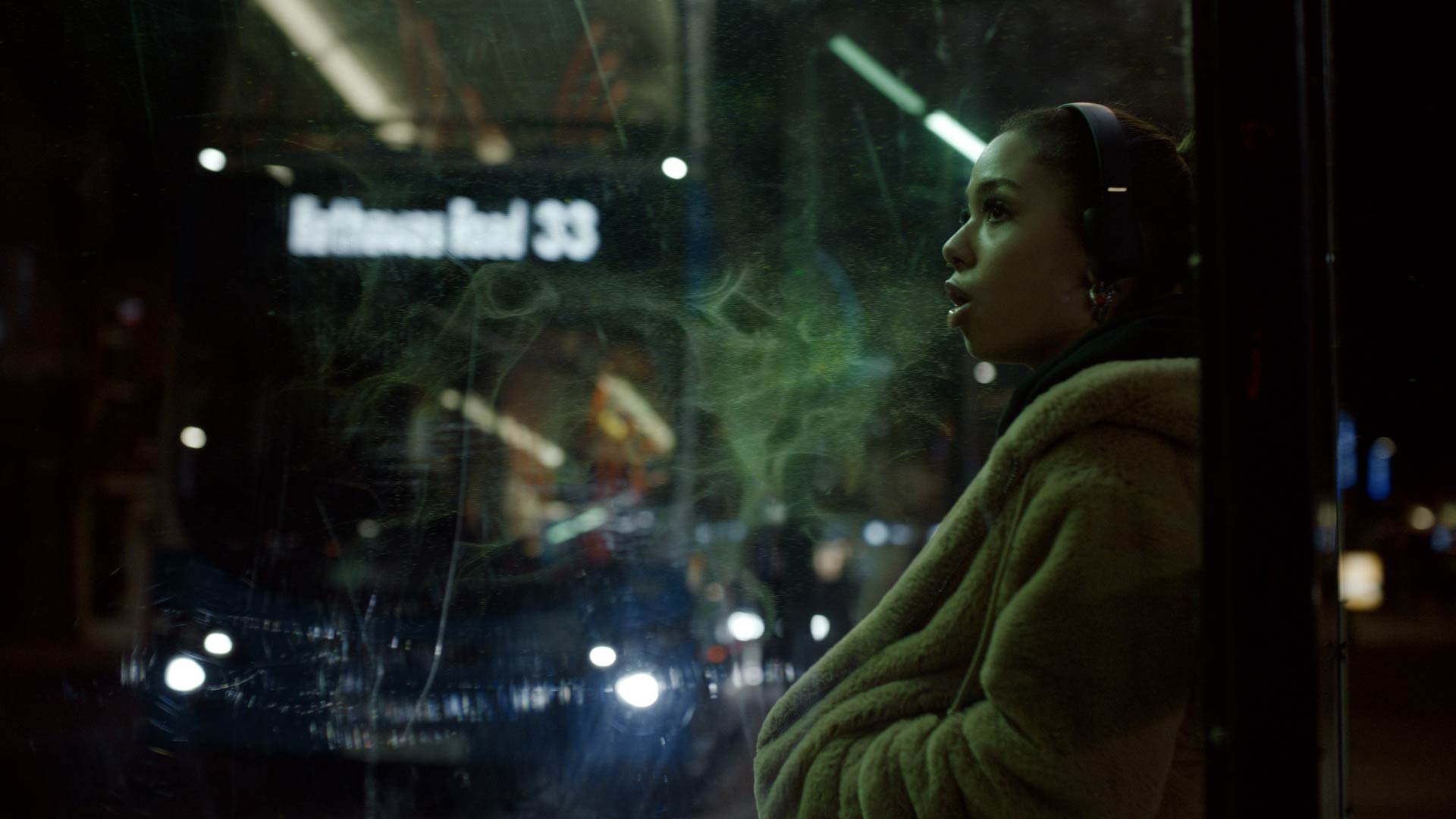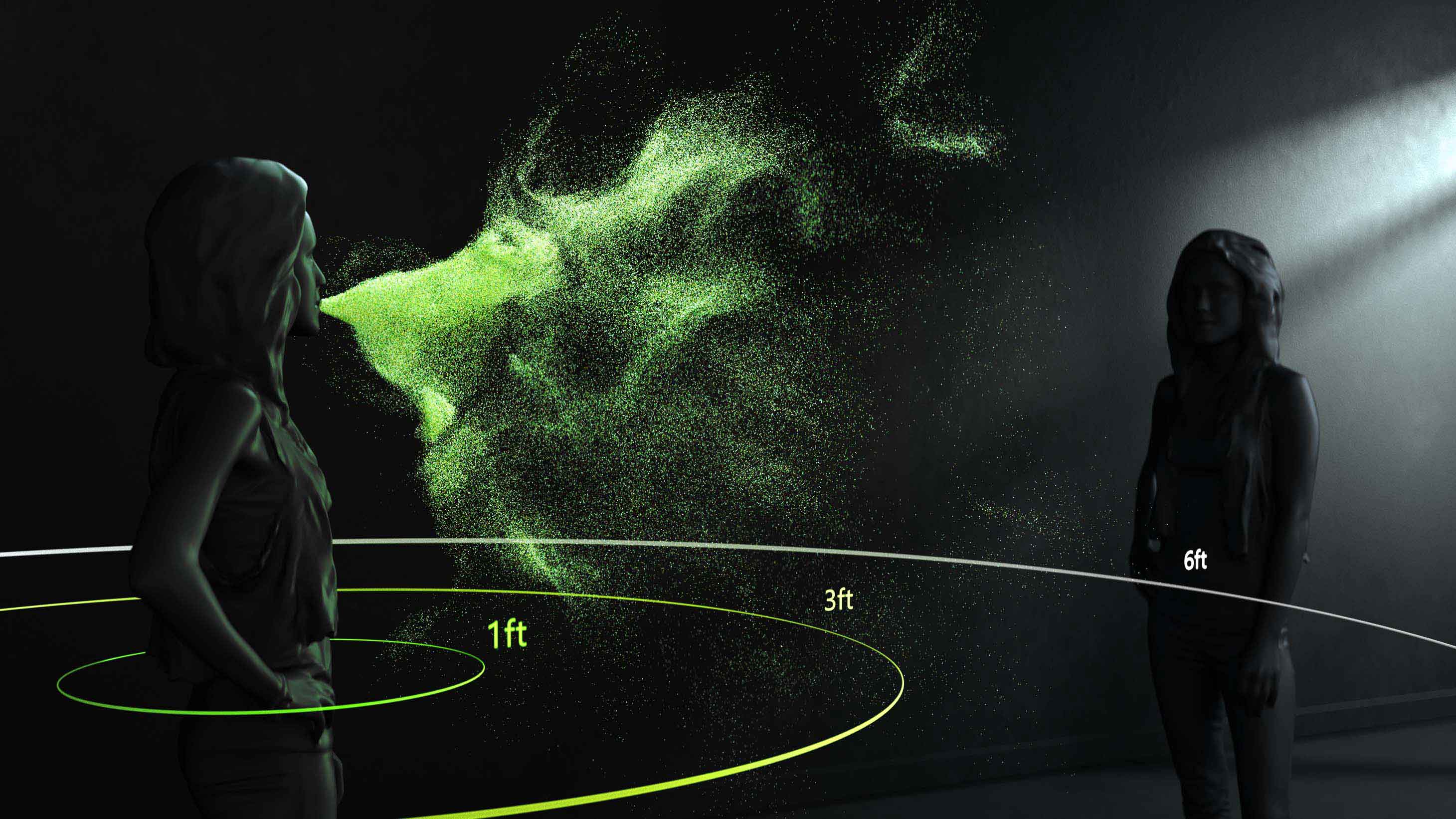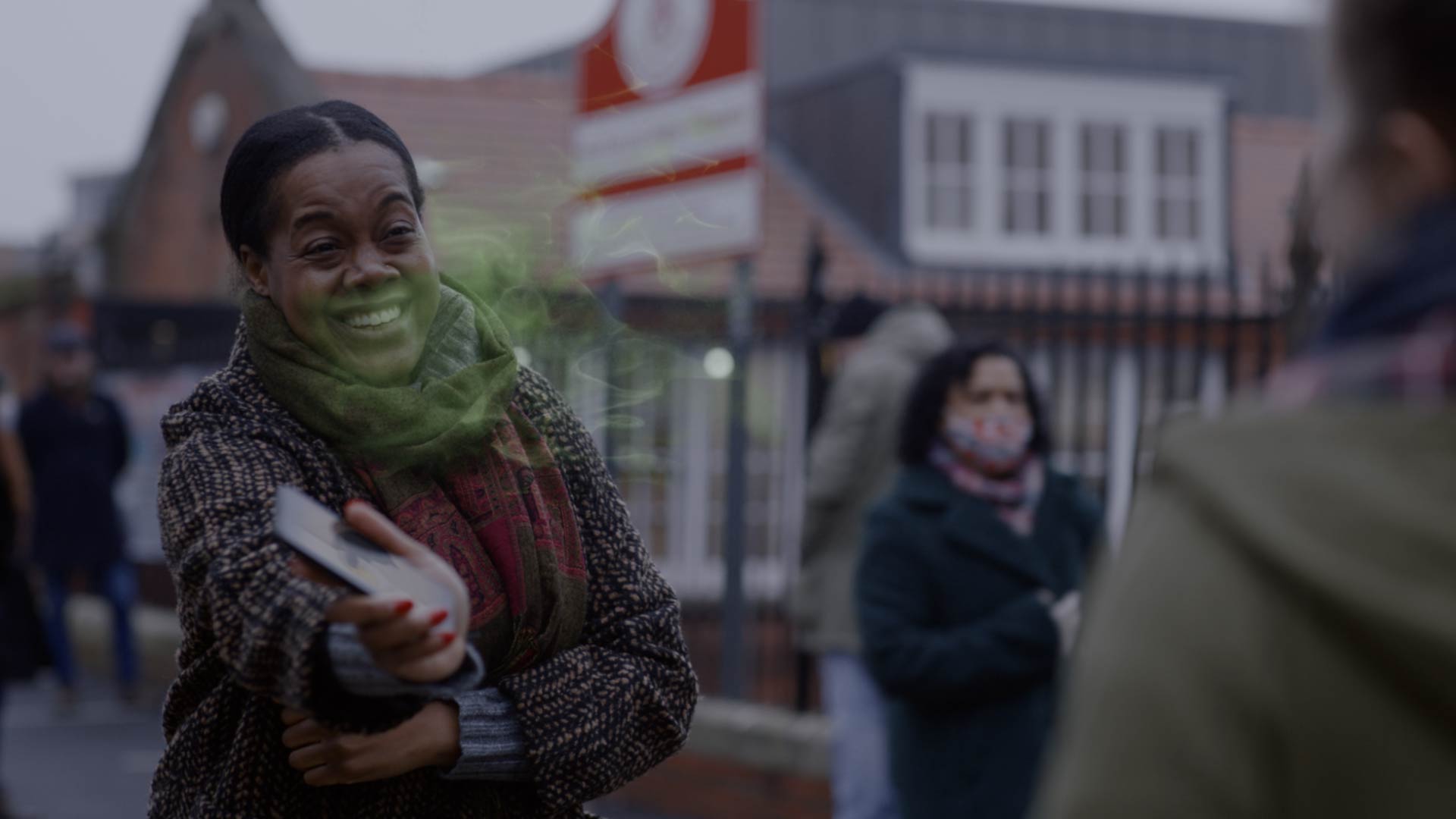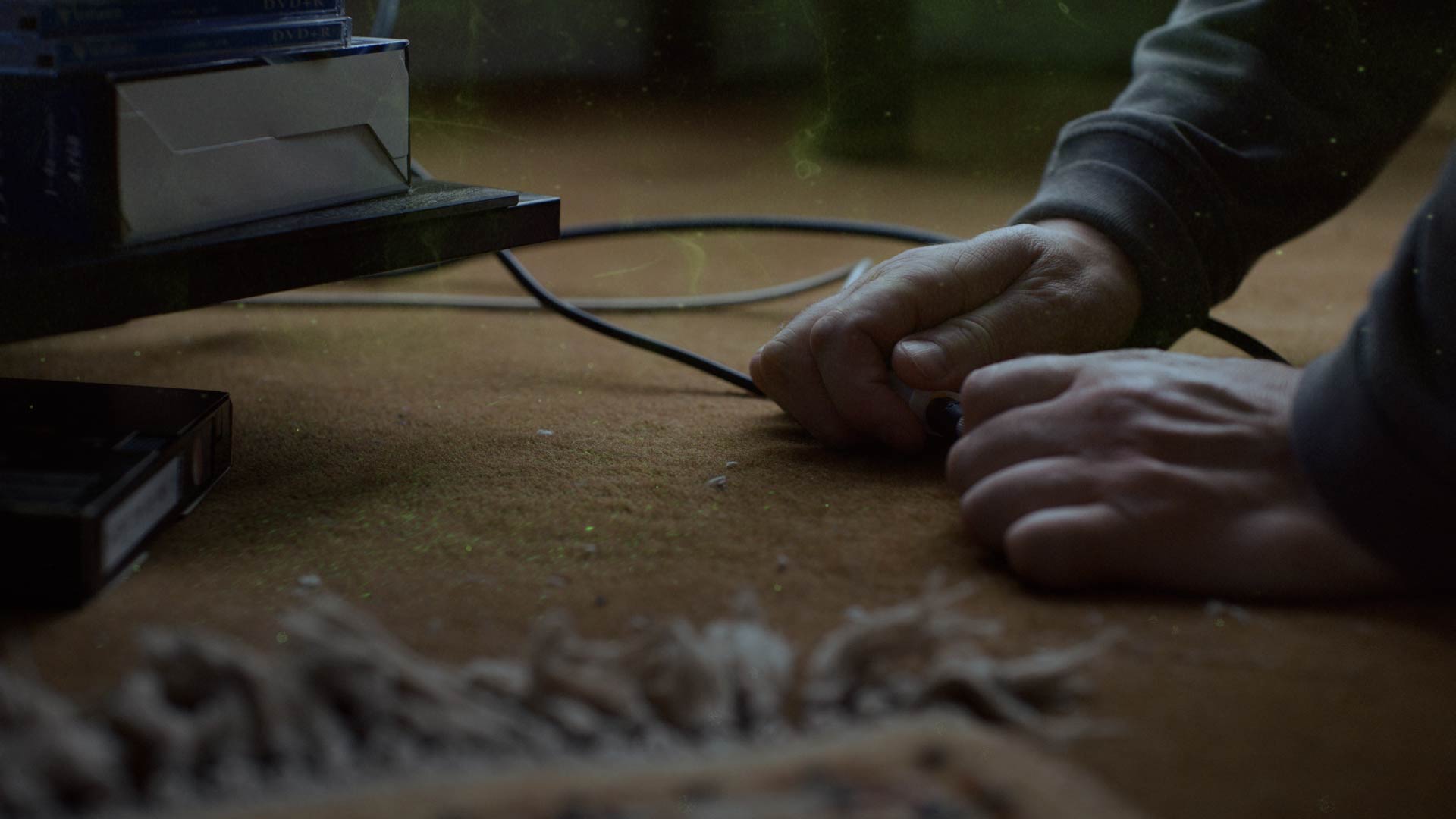Matt Rowley chatted with us about his work at UNIT Studios for their recent NHS (National Health Service) COVID-19 commercial in the UK. Matt worked in the motion design team as CG Lead to deliver the powerful 'Hands, Face, Space' message over national TV, encouraging viewers to stay vigilant and be aware of the spread of Coronavirus.
Hi Matt, thanks for agreeing to discuss your recent work on the NHS 'Stop the Spread' campaign. Before we talk about this piece, could you tell us about yourself and UNIT Studios?
UNIT is a London-based, award-winning, full-service creative studio. We are dedicated to every client's individual needs and working closely with them. We collaborate across all aspects of post-production; VFX, CG, Design, Audio, Grade, and Offline in the realm of Commercials, Broadcast, Film and TV.
Within our Design Studio, we have a bespoke motion design team, for which I am the Lead Motion Designer. Depending on the project, I oversee teams, and work independently in both 3D and 2D motion design work. I've been working in the industry for about 15 years, using Cinema 4D for most of that time.
What type of work do you create at UNIT and what is the process?
We work on a wide range of projects within UNIT Design; it depends on the work we will be creating, 2D or 3D.
If we pitch the creative on a brief, then as much of our time as can be allowed will be spent researching the client and brand, gathering references and background knowledge, and developing ideas through tests and style frames. All organized and presented in a fully branded UNIT presentation deck.
When starting practical work, we will begin by planning out our Research & Development phase and deciding how best to use our time. Then split the skills and talent in the team to cover various aspects of the work.
With a high-profile government campaign such as this, several parties are often involved. Can you tell us about your role in this project and at what stage of the project UNIT took the reins to work their magic?
UNIT was approached by the London-based advertising agency, Mullen Lowe, with the concept for the film and the initial brief for the VFX. This was three weeks before the delivery date. We then had to wait for the production team to organize their side of the project. While this took place we spent a few days setting up some testing in X-Particles to prepare for the final material to be sent back from the shoot.
I was involved across all stages of the CGI work on this project, from early Research and Development; development of our particle emission model, to developing and honing the look of our particle renders. I also directed members of the compositing team to perfect the final look of the shots, ensuring they were comped in line with the director's vision.
A fair number of long late-night Zoom calls could also be added to that list!
X-Particles was used throughout the commercial to help visualize the virus via particles floating through the air. Why was X-Particles chosen to create these simulations?
When the project first arrived within the department, the client referenced some much simpler work from previous governmental health campaigns, created entirely in After Effects. Alongside this, they showed some high-end references from movies and music videos. It quickly became apparent that their intentions for the project were far more sophisticated than the early references and X-Particles seemed the ideal solution.
With X-Particles, we knew we could quickly achieve something extraordinarily detailed and complex with the right level of control required to satisfy both the scientists and the creatives. We knew that the visualized virus particles would be emitted through breath, speech, and coughing, so we worked with various emission setups, using multiple X-Particles systems. Each system was driven by a combination of speed and sound modifiers linked to the vocal audio of the shot. We had multiple systems representing the varied size and weight of particles being breathed or 'coughed out,' in addition to numerous flow field dynamics and kill modifiers to control their range and movement through the air. The ability to build a core setup like this and then move it, scale it and pin it on the fly, shot by shot was impressive and a great testament to the usability of X-Particles.
The opening scenes of the commercial show a man walking home from the shops, passing socially distanced queues on his way, helping to normalize the daily routine we've become accustomed to over the past year or so. When he enters, he immediately washes his hands. On his hands, we see some green patches visualizing the virus as he heads to the sink. How was this effect created?
The visual effects for these scenes were initially intended to be shot entirely in-camera. Much of the green color on the actor's hands was created in makeup by the art department on set. However, when an unmistakable visual style was beginning to link all the virus visuals throughout the film, these early shots required a good deal of rotoscoping. Additional composition work in post-production was needed to highlight and exaggerate the effect and bring the shots in line with the others.
As well as the particle clouds floating from the actor's mouths, there are indoor shots where the viral particles are sucked out of an open window. How was the realism in this effect created?
One of our team focused solely on the ambient particle shots, those filling the rooms and moving out of the window, etc. Initially, the scenes were filled with particles via volume emission, and then particle advection was used to create the organic swirling motion within the space.
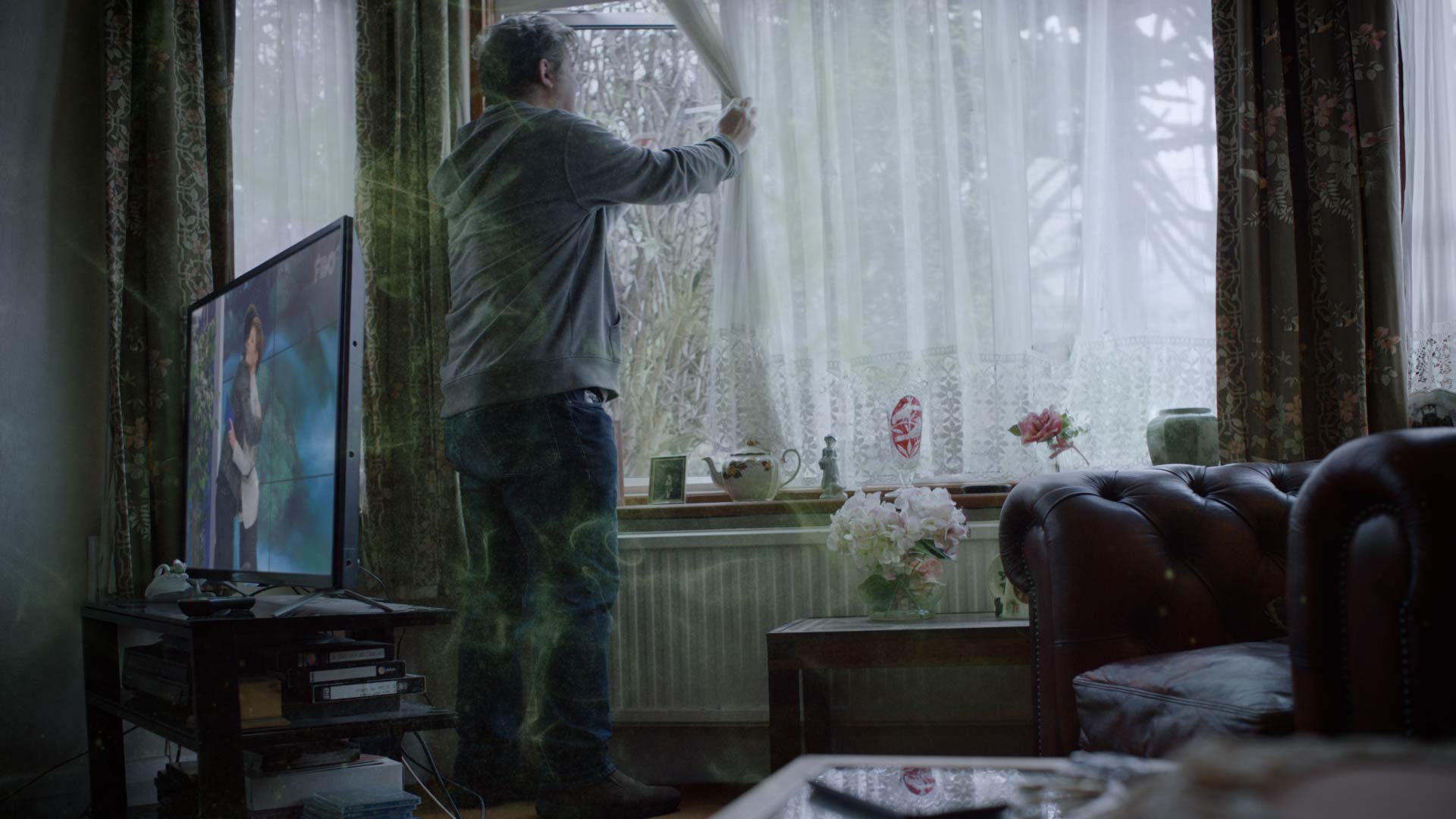
Bespoke collider geometry was built, including a rigged human, to disrupt the flow of particles concerning the contents in the room and the walls and window frames. For the window shot, we placed an attractor beyond the collider geometry to draw the particles over the windowsill and out of the room. Later, due to various feedback comments, we scrapped the advection route and recycled some of our flow field setup from the primary model to keep the particle movement more consistent stylistically.
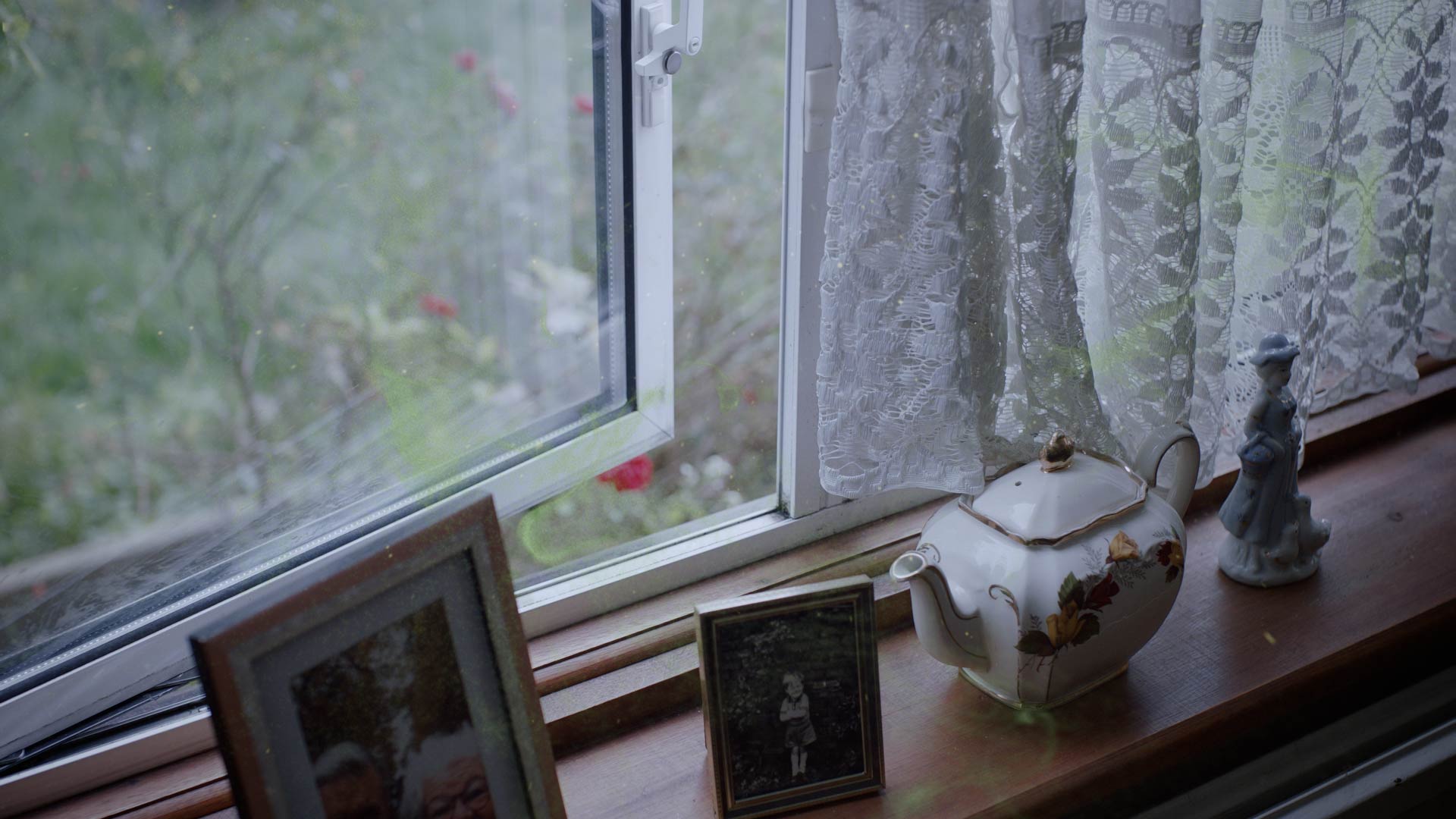
With so many people involved in the project and Covid-19 restrictions in place, how did you manage your time effectively?
Aside from a few days of Research and Development, testing, and a bit of basic Look development while we waited for the shoot to take place, the whole of this project was turned around in seven days, which was a very tight timeline. During that early Research and Development phase, one of our Cinema 4D team did a fantastic job building our 'technical model', while others focused more on Look Dev and render tests. We listened closely to the governmental scientific team and their detailed knowledge of how the virus behaves once airborne and worked this information back into the X-Particles system as a scale model. The idea was to get this system signed off on a scientific basis as quickly as possible to then be able to apply it to each tracked shot as they came through from the edit. This all worked well and gave us a significant head-start.
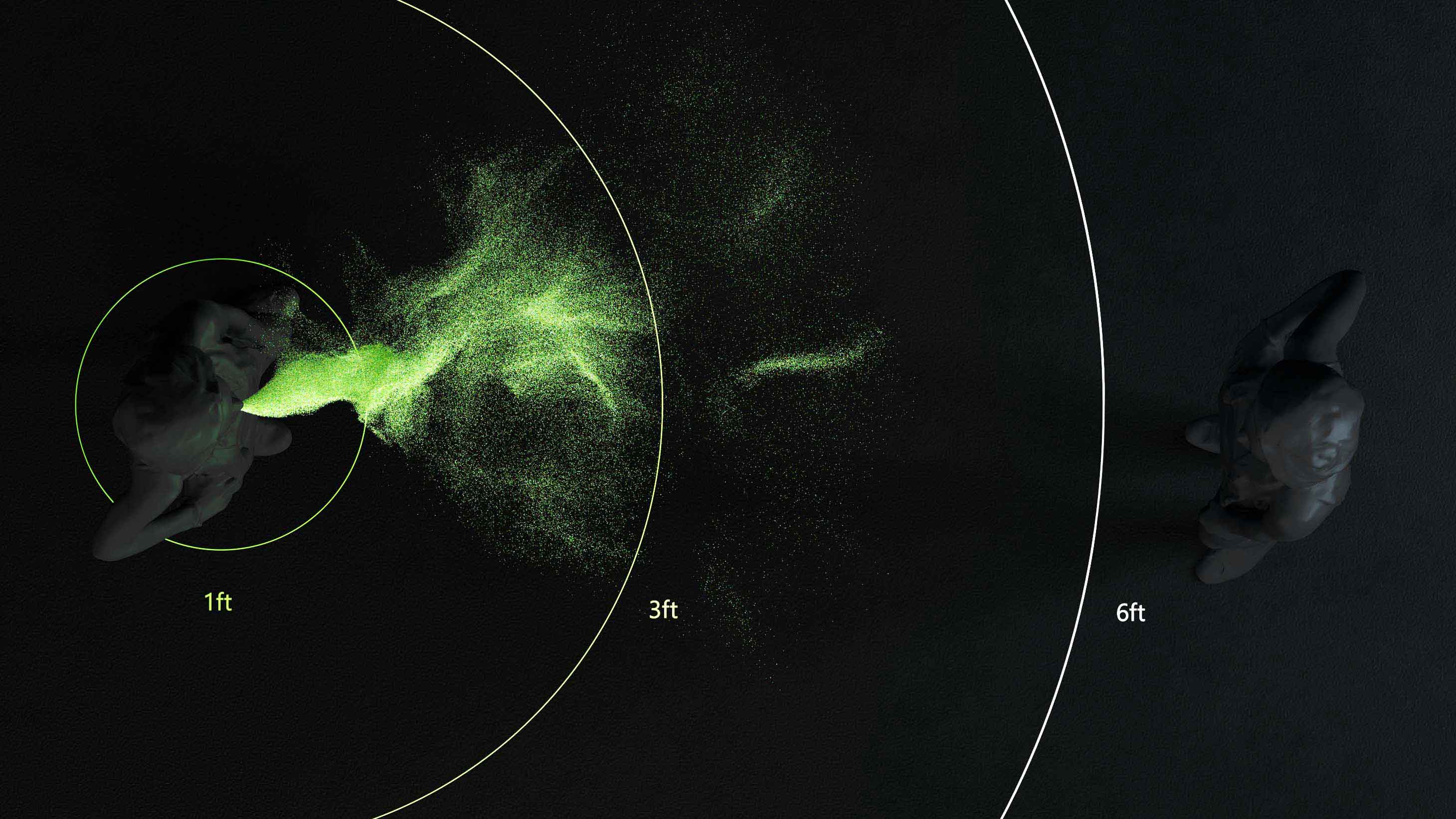
In terms of workflow, once into full post-production, our fantastic team of producers were vital in linking the various subsidiary teams and formed the seamless bridge between the client and ourselves, which was an enormous help when the time was stretched. Working remotely, as a Cinema 4D/X-Particles team, meant moving back and forth between local machines and our remote setup in the studio. We kept in touch on regular Zoom calls and WhatsApp videos, as well as using Teradici and AnyDesk to jump into each other's setups to help each other out.
Much of the tracking was done by an additional CGI team member in PFTrack and then moved over into Cinema 4D purely to save time at our end. When it came to the particle animation, we had originally hoped to do all the groundwork on our local machines and then move things remotely back over to the studio to render. However, the particle counts and cache sizes got so high that it became faster to render everything locally and then move the final sequences back to the studio for composition.
The final grade was the only part of the post process attended by the director. At the time, Covid rules permitted them to attend the office alone and sit with our Colorist, Denny Cooper, to add the finishing touches just the way they wanted.
Thanks again for taking the time to chat with us. Before you go, would you dispense some advice for our readers who are just starting out in the industry and would like to progress into a studio such as UNIT?
It's certainly crucial to learn the technical skills to do the job well, so when you do get the opportunity, you can make the very most of it. As I mentioned before, in a studio like ours, there is a wide range of styles of work, so I'd say it's a great idea, especially early on, to bear this in mind and spend time getting to grips with the fundamentals of both 2D and 3D work and the relevant software used for both. That being said, I think it's just as important to keep pushing your own creative work and to have fun with it. That and trying to meet people in the industry in any way you can, so often the opportunities come from a chance meeting or a conversation in the right place at the right time. Follow socials, attend events if you can and reach out to people on LinkedIn and have cool stuff at hand to show people if you do; I think this is the best way to get noticed.
Agency MullenLowe
Creative Directors Bertie Rapkin and Jon Morgan
Chairman Tom Knox
Joint Head of Account Management Katie McCambley
Account Director Monica Sabourin
Senior Producer Sian Parker
Strategy Director Charlie Snow
Production Company Knucklehead
Director The Dempseys
Producer Francis Mildmay-White
Production Manager Catriona Irving
DOP Jake Scott
Art Director Morgan Kennedy
Editing House Final Cut
Editor Joe Guest
Sound 750mph
Engineer Neil Johnson
Music Main track Music composition and publishing – String and Tins Ltd
‘Cross my Heart’ Music composition and publishing – Wake the Town
Design Studio UNIT Studios
VFX Compositor Lead Fraser Cleland
VFX Compositors Scott Ryan and Rob Ellis
CG Lead Matt Rowley
CG Jeremy Djaffer and Pav Ivanov
Colorist Denny Cooper
Shoot VFX Supervisor Angus Wilson
Studio Producer Isabella Wakely
